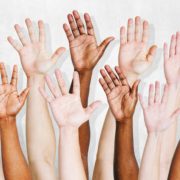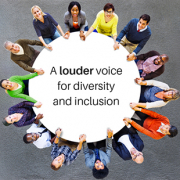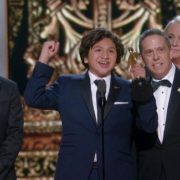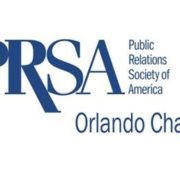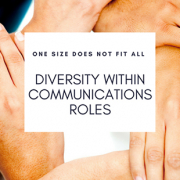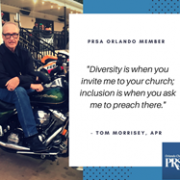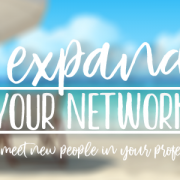PRSA ORLANDO – WHAT WE LEARNED AT SUPPER
PRSA Members on Ageism in the Public Relations Industry
2021 SPOTLIGHT: Ageism in the Workplace
By: Doragnes Rivera Bradshaw, PRSA D&I Chair
Based on positive member feedback, PRSA Orlando has been hosting an annual dinner and conversation focused on diversity and inclusion (D&I) topics since 2018. The event, known as Dinner, Diversity, and Dialogue, has provided members a safe space to deeply discuss and examine D&I topics that affect us in the workplace and in our community.
While last year’s event was held virtually, we were excited to transition back to an in-person setting this year with 12 chapter members in attendance. This year’s conversation was focused on ageism, which is defined as a stereotype, prejudice, and discrimination against people on the basis of their age (Burnes et al., 2019) – and a topic that is oftentimes forgotten within the continuum of D&I.
PRSA Orlando expresses their appreciation to the Anderson-Devitt Foundation, a family foundation that seeks to help our community become a better place to live, for sponsoring the event. In addition, Boldist, a digital marketing agency in Winter Park, allowed us to host the socially distant dinner in their spacious gathering room.
Ageism Rooted in History
In 1969, the term “ageism” was coined by psychiatrist Robert N. Butler (Achenbaum, 2015), a champion and pioneer for older persons who spent his life advocating for their rights and raising social awareness to the issues surrounding population aging. He gave it meaning as an affliction and once paralleled it to racism because it affected resources meant to serve older Americans such as Medicare, Social Security, and public housing. It effectively marginalized older adults and permeated negative attitudes toward the aging population. Over time, intergenerational tensions caused debates over generational equity. Academic researchers spent decades building upon this knowledge to bring awareness of the ageism stigma including that implicit ageism can also lead to adverse health effects. By the turn of the 21st century, scholars demonstrated that they could “no longer limit comparisons of ageism to racism and sexism.” In fact, new dyads have emerged when bringing together the intersectionality of race, gender, sex, disabilities, and more.
Today’s Labor Force Snapshot
According to the U.S. Bureau of Labor Statistics, our labor force share by age group in 2020 consists of 12.6% (16-24), 22.7% (25-34), 21.1% (35-44), 20.0% (45-54), 17% (55-64), and 6.6% (65 and older), with the median age being 42.5 years old. When we look at future projections, by the year 2030, the labor force is expected to increase by 8.9 million, or 5.5 percent, from 2020 to 2030. The labor force of people ages 16 to 24 is projected to shrink by 7.5 percent from 2020 to 2030. Among people aged 75 years and older, the labor force is expected to grow by 96.5 percent over the next decade. These projections leave employers vulnerable to potential miscommunication between and among different generations.
Figure 1 looks specifically at the data for the Advertising, Public Relations, and Related Services industry. What we can see is that the average age for a PR professional is lower than the total labor force population by 2.5 years.
Figure 1: Labor Force Statistics – Year 2020
Household Data Annual Averages: Advertising, public relations, and related services
(Numbers in thousands)
| Total, 16 years and over |
16 to 19 years |
20 to 24 years |
25 to 34 years |
35 to 44 years |
45 to 54 years |
55 to 64 years |
65 years and over |
Median age |
|
| TOTAL LABOR FORCE | 147,795 | 4,695 | 12,497 | 33,426 | 31,807 | 30,099 | 25,454 | 9,818 | 42.5 |
| PR
INDUSTRY |
542 | 5 | 32 | 174 | 135 | 92 | 74 | 30 | 40.0 |
Generational Voices
It is most important to remember that age is a part of diversity, so having all voices at the table matters. The 25-year-old of today is not the same 25-year-old from the 1950s because of their different life experiences. Everything from their values and upbringing to the availability of technology at their fingertips.
According to Purdue University, for the first time in history, there are five generations in the workplace. This represents a challenge in how workplace professionals communicate and respond to generational differences. Social media became a new form of marketing. An unintended consequence is that it served to spotlight how vast the differences in generational voices have become. Older people, many times senior leaders, may have no desire to be active on LinkedIn. Yet, younger professionals are eager to share their latest career accomplishments and have the knowledge and desire to navigate the evolving digital space. As the various social media platforms age themselves, they appeal to different audiences. For instance, Facebook was once the place to be. Now, it’s where you can find grandparents catching up on family life events. In the meantime, the grandkids are on Snapchat sharing stories in real-time or on TikTok. Teenagers think Facebook is for “old people.”
Ageism and Leadership
Great leaders understand that everyone learns differently and is inspired in different ways. Thus, information will be presented differently by the type of leader you have become. The key is to value those strengths by having the creativity and wisdom to bring it all together through a tailored approach.
There are assumptions in the workplace that work against both younger and older leaders. For example, many assume a 25-year-old will not have the experience in the workplace to be a successful manager. Conversely, there is an assumption that an older leader is set in their ways and not willing to change. Think of the adage “you can’t teach a dog old tricks.” Either way, these assumptions do not take into account the individual and keep people from opportunities based solely on their age.
Ageism and Implicit Bias
In the figurative “good old days,” employers wanted specialists who could focus on one specific skill set and become experts in their field. Today, the words “ninja” or “guru” on job listings have both a positive and negative connotation because it implies, you’re positively a jack of all trades, and negatively that an employer is trying to get more for less. Younger employees feel that it is unfair to target younger, and perceived to be more eager, persons who are willing to do more for less. The language is seen as a “turn-off” and not the type of culture that people want to work in. They don’t want to be a “corporate slave.” In addition, the language would also be a negative for an older worker who may use terms like “expert” or “experience.”
Another observed implicit bias is the assumption that if you’re young or have some sort of latest gadget, then you must be tech-savvy. With this example, older generations lean on younger employees to help them fix technical issues or be on top of the latest trends. Yet, back in the dot.com start-up era, those same companies didn’t want their young employees to publicly share age demographics because it could influence their credibility with long-standing partners. Specifically, they were advised not to post specific years on LinkedIn profiles because it could lead to ageism. The companies did not want to be viewed as inexperienced in their field.
According to AARP (2021), when it comes to implicit bias from a creative perspective, it is imperative to recognize that aging adults represent a target market with substantial revenue growth. Yet, with the average age of PR professionals at 40, there is a lack of age diversity in the creation of advertisements for our aging target audience. Unfortunately, the same study shows that older Americans are seven times more likely to be negatively portrayed than those under 50 in online ads. This cost the U.S. economy $850 billion in 2018. It’s time to enact change against the stereotypes with clever and caring advertising for older adults rather than derogatory and insensitive approaches. We can all agree that we want to age with dignity.
In the end, avoiding implicit bias comes down to making people look real and authentic within today’s world. It is realizing that people, young or old, deserve the same respect and should not be stereotyped or boxed into categories that were once acceptable decades ago. As professional communicators, we have a responsibility to take the time to think about how we are representing a story, and not rush to make a deadline.
Making an Impact
No matter the age group, everyone wants their voice to be heard. We asked our participants to share some of the ways your organization can ensure all voices reflect an inclusive workplace. Here’s what they said:
- Remember and know your audience.
- Form DEI committees that house people from all groups within your organization.
- Provide and prioritize DEI training across all levels of the organization.
- Conduct communication audits across various channels and platforms.
- Be intentional about creating “one voice” across the organization that represents a consistent way of communicating to break down silos.
- Implement methods of sharing information on what’s going on.
- Create an internal communication box to allow people to voice concerns to the HR team.
- Develop a culture of respect.
- Encourage reverse mentoring with younger and older mentorship partners.
CONSENSUS
Ageism is being experienced by employees across all generational age ranges in the workplace. However, on a positive note, it was unanimously agreed upon that over time multigenerational workforces become stronger and work better together as a team. There is an earned appreciation for the diversity of thought and for leaving egos at the door. It is incumbent on us to embrace our generational differences and appreciate the growth that comes with them. Every new generation will have new and different lived experiences while facing new challenges. The one thing we can count on is that the world will continue to change and we have to learn to adapt and change with the times to become better communicators for all.
We Welcome Your Insights
We look forward to hearing more from you about how PRSA can help communications professionals address diversity and inclusion in the profession and at large. We welcome suggestions from all of our members. Please reach out to PRSA Orlando’s 2022 Diversity and Inclusion Chair, Doragnes Rivera Bradshaw, to continue the discussion, provide feedback, or join the PRSA Orlando D&I committee.
References
Achenbaum, W. A. (2015). A History of Ageism Since 1969. Generations: Journal of the American Society on Aging, 39(3), 10–16. https://www.jstor.org/stable/26556123
Dychtwald, K. (2021). Ageism Is Alive and Well in Advertising. AARP. https://www.aarp.org/work/working-at-50-plus/info-2021/ageism-in-advertising.html
U.S. Department of Labor Statistics (2021). https://www.bls.gov/oes/current/naics4_541800.htm


